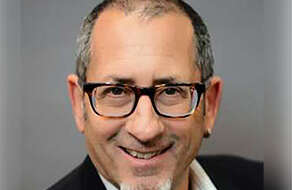The internet of things, or IoT, refers to sensors with an extremely wide range of capabilities, network requirements, and power needs. Therefore the market has tended to fragment into distinct segments, each with its own network architecture, associated devices, and applications. Applications range from worldwide networks of sensors operated by the National Oceanic and Atmospheric Administration to the network of security sensors in a given federal building.
Now, according to Mark Grodzinsky, the vice president...
READ MORE
IoT is really a fragmented market that is stratified on different verticals, different applications. But we are seeing this convergence coming, and the network is starting to unify. — Mark Grodzinsky, vice president and general manager, Ruckus Networks.
Mark Grodzinsky
Vice President and General Manager, Ruckus Networks
The processing part [of IoT] is really interesting right now, because you're starting to see the ability to get smaller and smaller processing to feed all the different AI and ML engines that are out there. – Kurt Steege, chief technology officer, ThunderCat Technology
Kurt Steege
Chief Technology Officer, ThunderCat Technology
Architectural and Technology Approach to IOT
Segmentation, visibility and analytics [and] having a gateway that can manage or give you visibility across multiple communication paths, that becomes essential. — Chris Thomas, technology strategist, Dell Technologies.
Chris Thomas
Technology Strategist, Dell Technologies
The internet of things, or IoT, refers to sensors with an extremely wide range of capabilities, network requirements, and power needs. Therefore the market has tended to fragment into distinct segments, each with its own network architecture, associated devices, and applications. Applications range from worldwide networks of sensors operated by the National Oceanic and Atmospheric Administration to the network of security sensors in a given federal building.
Now, according to Mark Grodzinsky, the vice president and general manager of Ruckus Networks, the IoT market is unifying.
IoT “is really a fragmented market that is stratified on different verticals, different applications, Grodzinsky said, and even within a given vertical. For instance, a video surveillance system might have cameras that need a continuous power source and that produce a significant stream of data. A network of door sensors indicating open or closed, typically uses low-power, battery operated devices producing small bits of data.
Each additional IoT application seems to “come with a hub, it comes with an app. And now you’ve got 10 different networks, 10 different apps,” Grodzinsky said. Now “the enterprise network players are going out there and deploying a more universal network that can then run all of these types of applications.”
Even if IoT devices are using 5G, Ethernet, WiFi, Bluetooth, or Z-Wave, Grodzinsky said, emerging access points are multifunction to accommodate differing standards, frequencies, and power requirements. This approach helps unifies security and network administration, he said.
For Kurt Steege, chief technology officer at ThunderCat Technology, the unification of sensors and networks also enhances an agency’s ability to combine IoT data for artificial intelligence and machine learning. That’s partly a result of the growth in edge computing and in on-board capabilities, at least of larger classes of IoT devices.
“The processing part is really interesting right now, because you’re starting to see the ability to get smaller and smaller processing to feed all the different AI and ML engines that are out there.” Steege said.
Realizing this potential, he said, takes careful planning.
“Infrastructure planning going to be important in how you’re going to drive power and comms together,” Steege said, “to get this information and power there. Because the convergence of that is critical to how we make that work.”
With respect to security, Steege emphasized the need for a comprehensive approach as networks and data converge. He said last year’s issuance of Special Publication 800-213 by the National Institute of Standards and Technology brought out a useful guide to IoT security.
One way to ensure cybersecurity is through macro- or micro segmentation of your networks, said Curt Thomas, technology strategist at Dell Technologies. Use of commercial cloud computing complicates data handling and security because of the diversity of data pathways it offers. Somehow, IT staffs need a window into what’s going on with IoT, no less than they do with devices associated with human users.
“One of the challenges that we’ve worked on with our partners like Thundercat, and Ruckus is, how do I give you that single, single centralized point of, I guess you’d say synergy, for a single dashboard to manage all those different connection types,” Thomas said. “With the merger of 5G and WiFi and things of that nature it becomes convoluted and complex at some times. But we’ve been able to work together to create systems and solutions.”
Along with segmentation, Thomas said, agencies need visibility into, and analytics of, IoT network activity. Zero trust comes into play, too, with the need for “comply to connect” policies for IoT devices.
Just as analytics can detect anomalous behavior by users, it can also detect it in IoT devices. Thomas described what he called an IoT controller to “give me that centralized point to aggregate that data and analytics.”
Several agencies are out in front with organizing and security their IoT data, and they cover a wide range of missions. Thomas cited the Defense and Veterans Affairs Departments, and the Transportation Security Administration.








